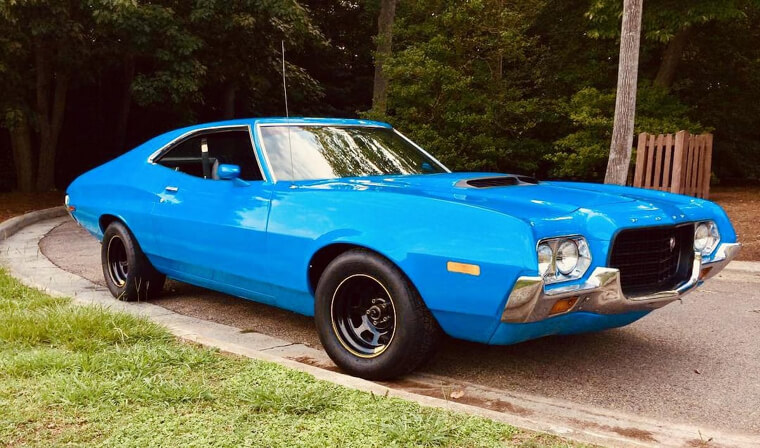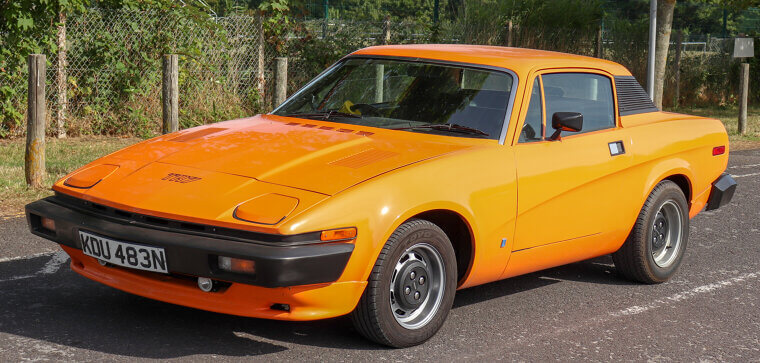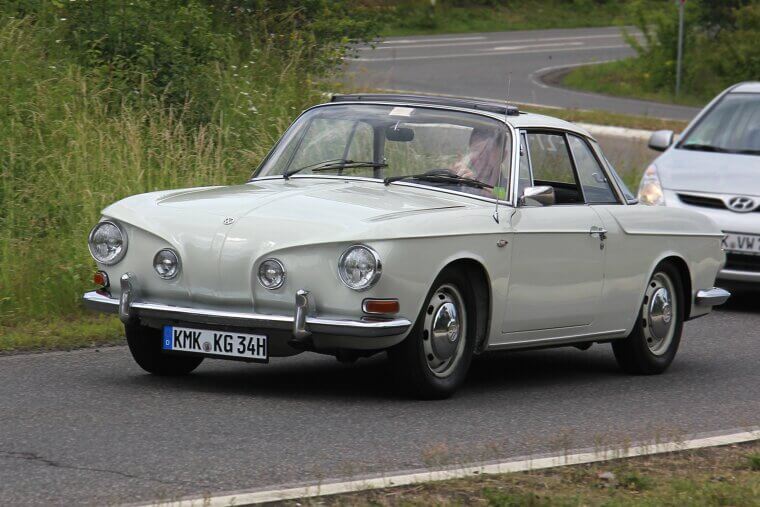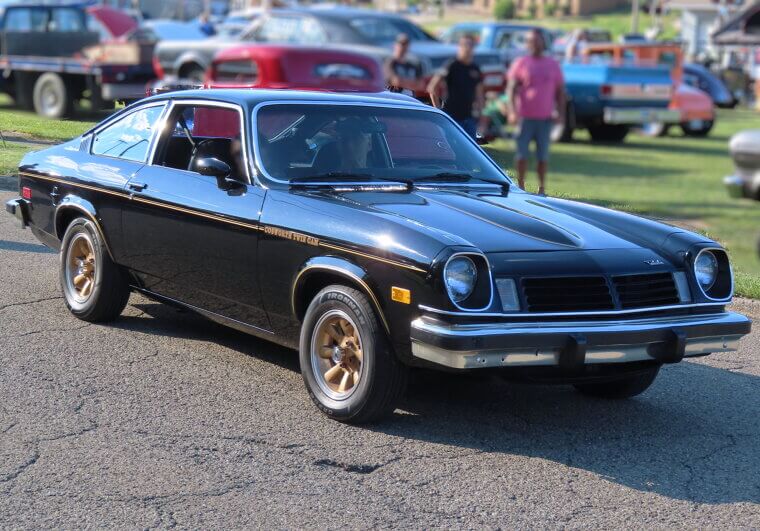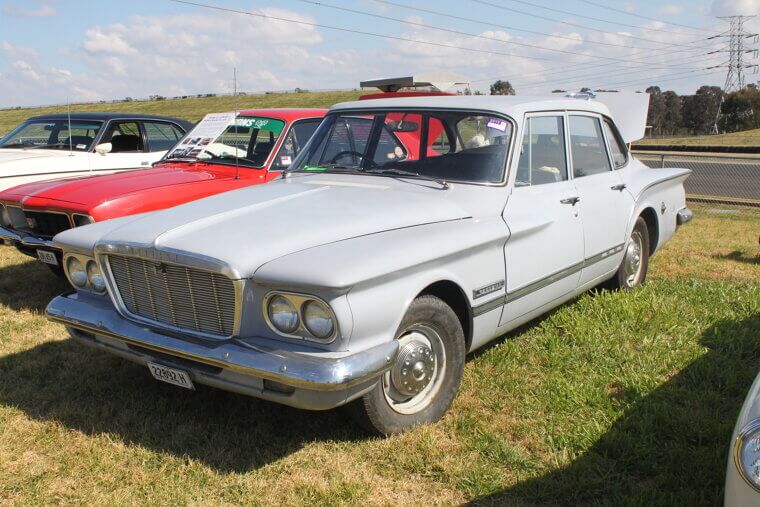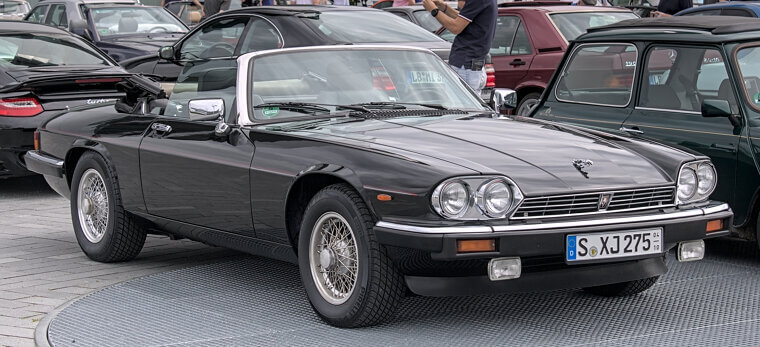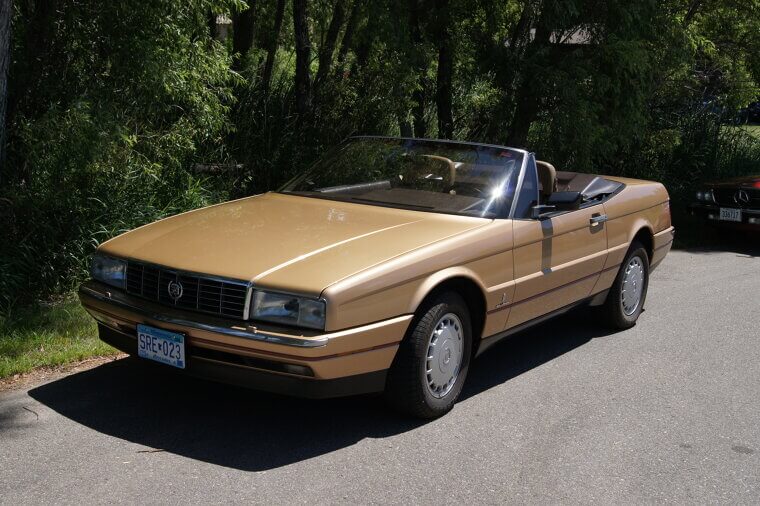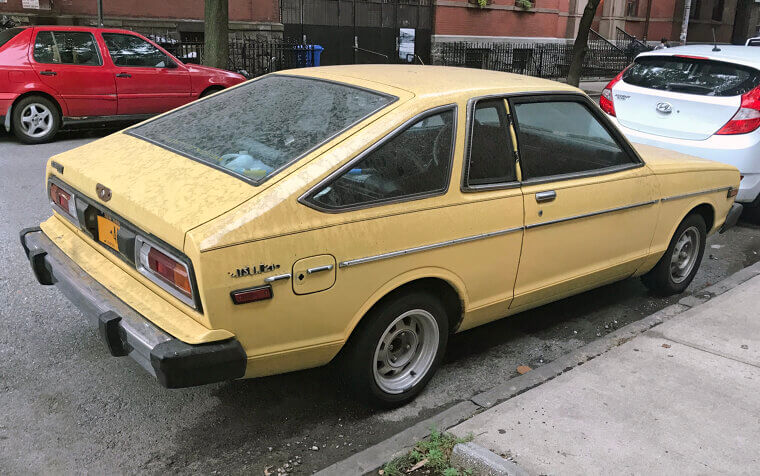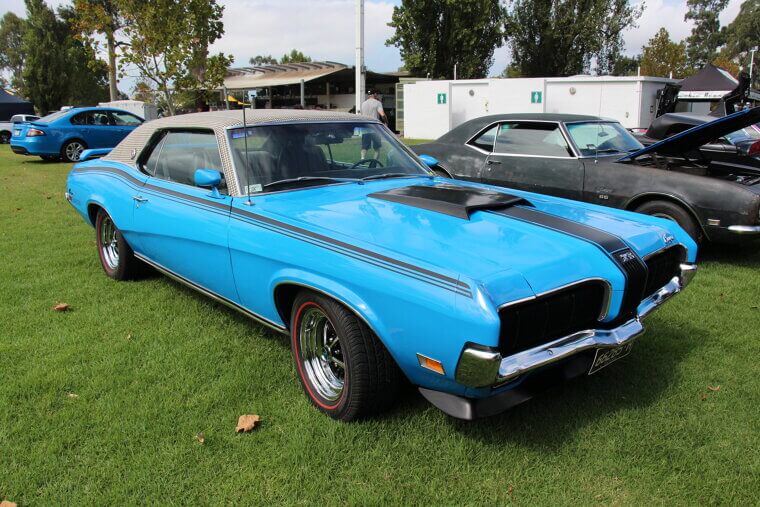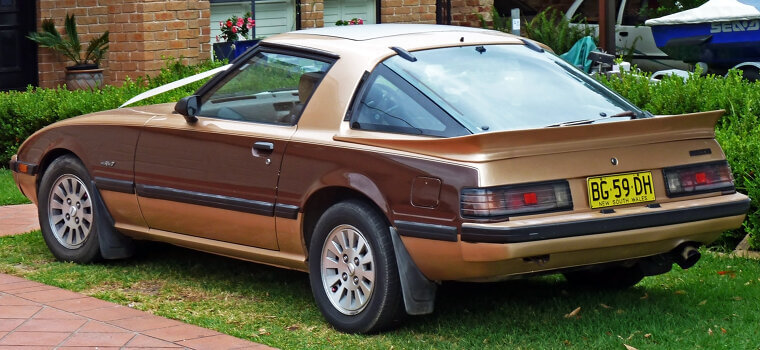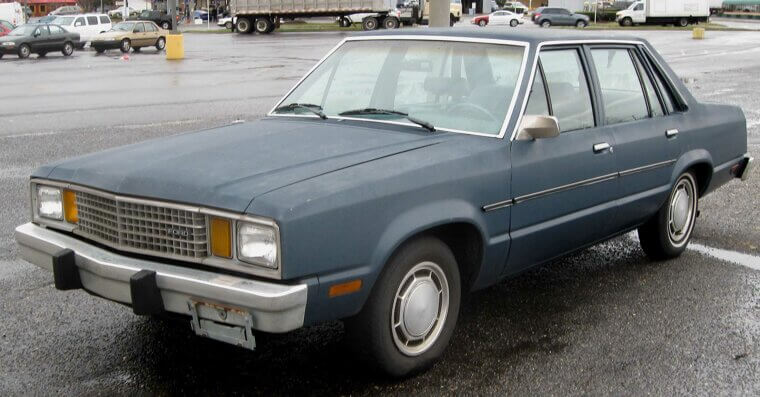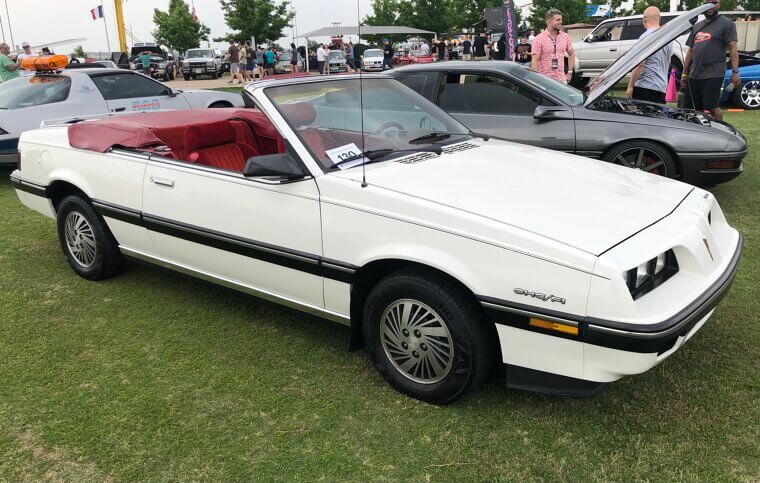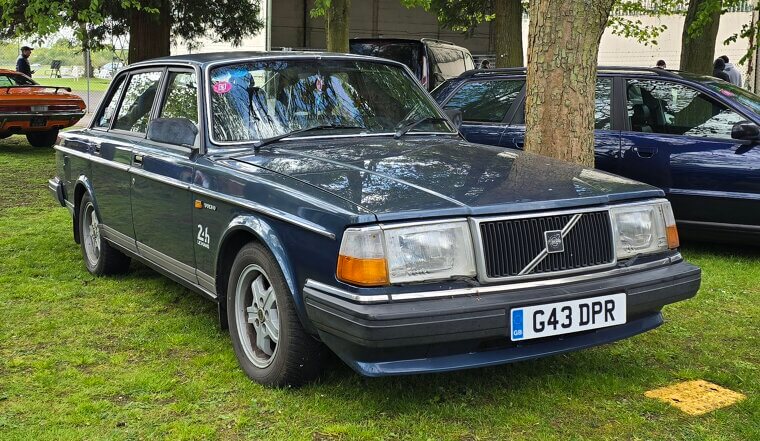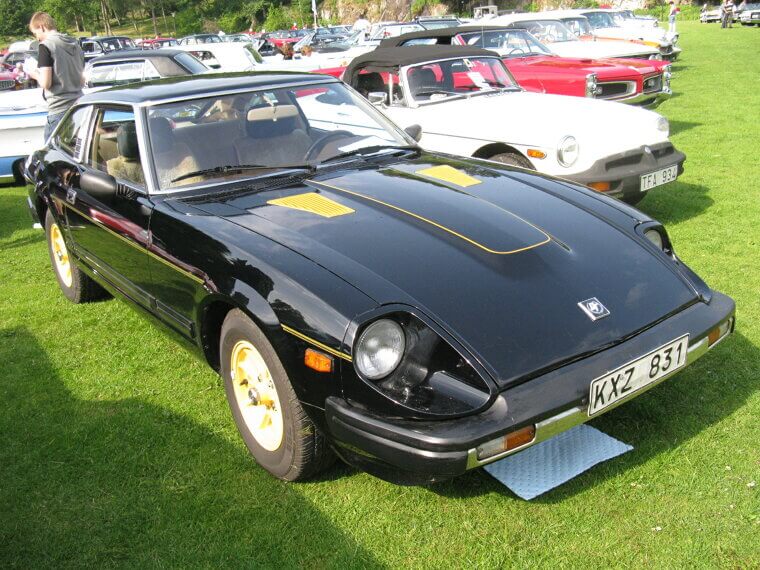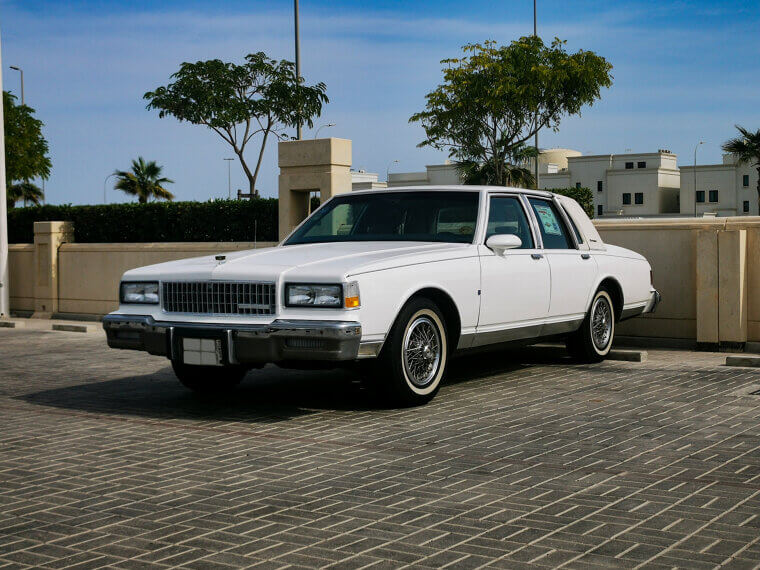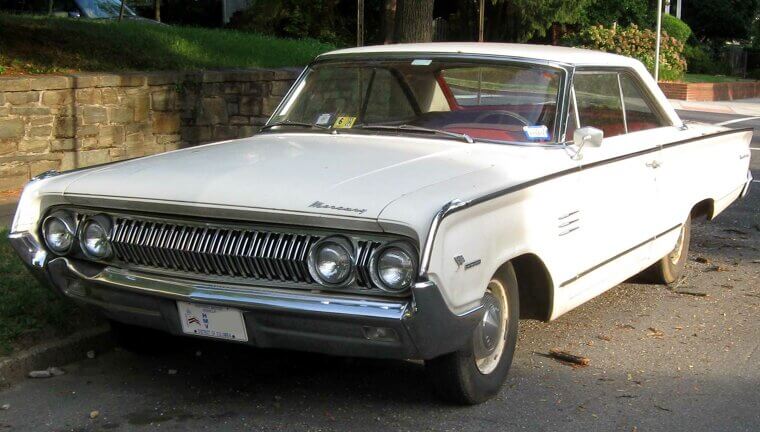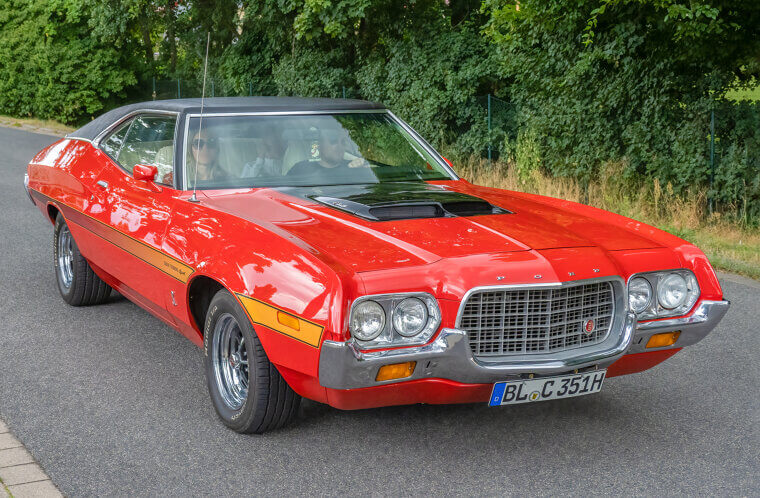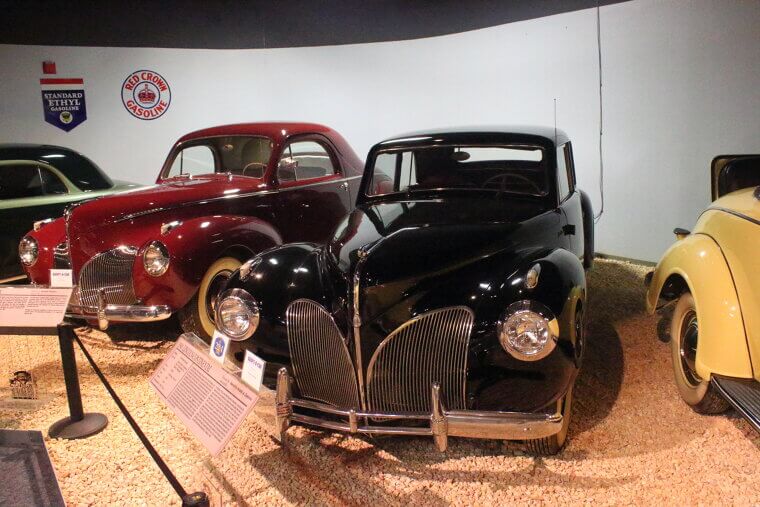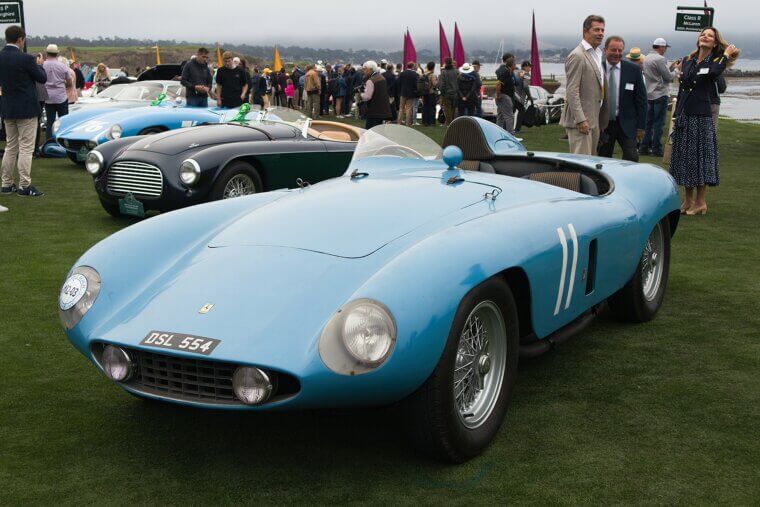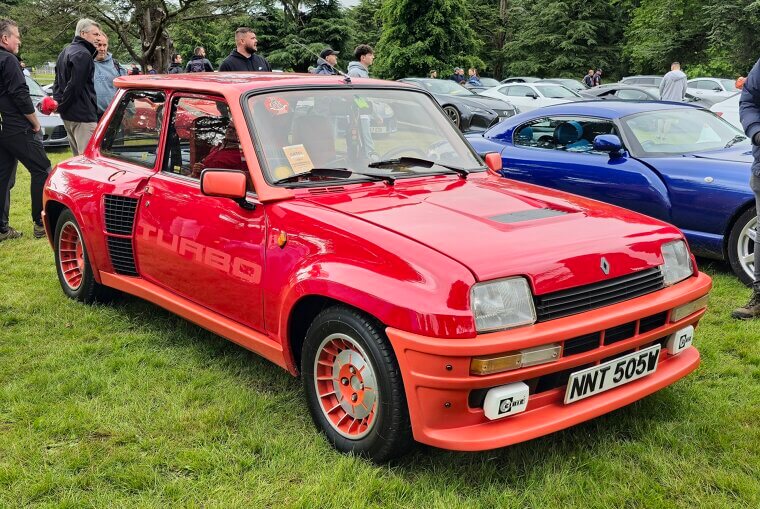Don't Bother Restoring These Cars
Are you a classic car enthusiast or perhaps a collector of old-fashioned vehicles? If you are, then you most likely believe that all classic cars hold their money and are worth restoring. However, this is not the case for quite a few vintage models, which may come as a shock to you. Is your interest piqued? If so, continue reading to uncover the classic cars that are not worth the time or money that goes into restoration.
Some of these cars may look appealing at first glance, but the hidden costs and low resale value make them a poor investment for even the most passionate restorers.
Ford Pinto
The Ford Pinto became well-known in the 1970s as a compact, reasonably priced automobile choice that appealed to city drivers. However, this notoriety was short-lived. Due to safety concerns, the Pinto received a lot of negative feedback. And that is not a good look. The infamous rear-mounted fuel tank design made it prone to catching fire in rear-end collisions, leading to lawsuits and recalls.
Its reputation never recovered, and restoring one today won’t earn admiration—just questions about your judgment and taste in projects.
Chevrolet Corvair
In the 1960s, Chevrolet introduced the Corvair, a unique design featuring a rear-engine configuration that was unheard of for American automobiles at the time. It quickly came under fire, however, due to potential safety concerns with its handling. Consumer advocate Ralph Nader famously criticized the car in his book Unsafe at Any Speed, citing its unstable suspension and poor crash performance.
Today, the Corvair’s tarnished legacy and limited demand make restoration more hassle than it's worth for most enthusiasts.
AMC Gremlin
The AMC Gremlin is remembered for its bold and quirky design, standing out in the compact car market of the 1970s. Its nobbly-bobbly shape and budget-friendly pricing made it popular during its time, but it hasn’t retained much value over the years. Performance was underwhelming, build quality was questionable, and parts are increasingly hard to find.
Even with nostalgia on your side, restoring a Gremlin won’t turn many heads—or turn much profit. It’s a fun relic, but not a practical investment.
Triumph TR7
In the late 1970s, the British sports automobile, the Triumph TR7, debuted with sharp, wedge-shaped styling that caused considerable controversy among enthusiasts. Some thought it was brilliant, while others questioned whether it was made with a ruler and a grudge. Despite its promise of a sporty ride, the TR7 was beset by a number of mechanical problems.
From electrical gremlins to unreliable engines, the car struggled to meet expectations. Today, even restored examples rarely fetch high prices, making it a poor choice for serious restoration efforts.
Fiat X1/9
Some would say that the unique targa top design of the Fiat X1/9, a lightweight, mid-engine sports car that debuted in the 1970s, was just Fiat's method of ensuring that the roof outlasted the engine. However, collectors are not as interested in it because of its low power production and significant maintenance needs. Restoring one might satisfy curiosity, but it's unlikely to satisfy your wallet or patience.
Rust issues, tricky electrical systems, and a general lack of demand further diminish its appeal.
Ford Thunderbird (70’s Model)
Ford’s late-70s Thunderbird flaunted luxury but lost the sporty edge of its predecessors. Growing in size, it prioritized style and comfort over power—more boulevard cruiser than tire-shredder. While its plush interior and distinctive looks drew attention, its lackluster performance and uninspired driving dynamics turned off serious collectors. It’s nostalgia-heavy, yes—but not a wise use of time or money.
Restoration costs often outweigh the car’s final value, leaving owners with a heavy, slow cruiser that few are clamoring for.
Volkswagen Karmann Ghia
The Volkswagen Karmann Ghia, a beautifully designed coupe that blended German engineering with Italian flair, carved out a unique place in automotive history—though it often felt like the Beetle’s stylish but underpowered sibling. Unfortunately, it never reached the Beetle’s level of fame and shared its modest engine. Despite its good looks, the Ghia lacks performance, and restoration costs can quickly exceed its resale value.
Unless you’re restoring for personal passion, it’s better to admire this one from a distance.
Pontiac Fiero
America's first mass-produced mid-engine sports car, the Pontiac Fiero, was a daring invention in the 1980s—until it decided that part of its appeal was overheating. Reliability problems damaged its image despite its bold design. Engine fires, electrical issues, and poor build quality plagued early models, souring public perception before improvements could be made. While later versions were more refined, the damage was already done.
Today, restoration costs rarely align with market value, making it a risky bet for classic car enthusiasts.
MG MGB
One of the most popular roadsters in Britain is the MG MGB, renowned for its ease of driving and enjoyment. Although admirers love its charm, it's not exactly a unique gem; in England, it's as common as a rainy day, making it a reasonably priced introduction to vintage British cars. For many, it’s a starter classic, not a restoration-worthy investment.
Because of its mass production, restored models don’t command high prices, and parts—though easy to find—don’t add much resale value.
Chevrolet Vega
Chevrolet’s Vega aimed to be an economical compact, but its aluminum-block engine proved more meltdown-prone than innovative. Reliability issues quickly overshadowed its promise, sending its popularity into a tailspin. Rust problems, overheating engines, and subpar build quality earned it a reputation as one of GM’s biggest misfires. Despite its early hype, the Vega’s legacy is more cautionary tale than collector’s dream.
Restoring one may be a nostalgic gesture, but from a practical standpoint, it’s rarely worth the investment.
Plymouth Valiant
The Plymouth Valiant, a reliable workhorse in the 1960s and 1970s, was praised for its longevity. However, because of its simplicity and vast quantity, it continues to be a more reliable everyday vehicle than a sought-after collectible. It lacks the flair, performance, or rarity that tend to drive up value in the classic car world. It’s practical—but hardly the stuff of dream garages.
While it might run forever, restoring a Valiant won’t turn many heads at car shows or auctions.
Jaguar XJ-S
The Jaguar XJ-S is a traditional British luxury vehicle featuring a strong V12 engine and a sleek appearance; however, many customers have been deterred by the high maintenance costs. The XJ-S is notorious for its frequent mechanical issues and high maintenance requirements, which have diminished its appeal to collectors. While its elegant design turns heads, the complexity under the hood often turns wrenches—and budgets—upside down.
Unless you have deep pockets and a deep love for Jaguar, this is one restoration project best left alone.
Cadillac Allante
The Cadillac Allanté blended American engineering with Pininfarina’s Italian styling, but at launch, its price tag was loftier than its performance. Despite its sleek looks, it struggled to find its footing, making it more of an ambitious experiment than a collector’s favorite. Its unique production process, involving transatlantic shipping of bodies from Italy, added complexity but not reliability.
Today, its resale value doesn’t justify the high cost of parts and labor. It’s a stylish misstep rather than a sound restoration investment.
Buick Reatta
Buick's attempt to produce a sporty two-seater with a digital dashboard, the Reatta, was never very popular with consumers. Although its high-tech features were cutting-edge at the time, its performance was not up to par with its cost. The Reatta lacked the horsepower and handling expected from a true sports coupe, and its futuristic electronics often led to frustrating repairs.
With low collector demand and limited aftermarket support, restoring a Reatta is more likely to drain your wallet than deliver rewards.
Datsun 210
The Datsun 210 earned a reputation for reliability and fuel efficiency, making it a sensible choice—but not exactly a pulse-raiser. Its simplicity and abundance keep prices low, and while enthusiasts appreciate its durability, it lacks the collector appeal of flashier Datsun models. With minimal performance and a plain design, it simply doesn’t inspire restoration dreams.
Parts may be easy to source, but that alone doesn’t justify the effort. Unless you're driven purely by nostalgia, the 210 is best left unrestored.
Mercury Cougar (80’s Model)
In contrast to its previous image as a muscle vehicle, the 1980s Mercury Cougar was more of a luxury coupe with limited performance. Due to their widespread use, collector interest in these latter models has been limited, and they are not as valuable as the initial muscle-car versions. Styling was subdued, powertrains were uninspired, and handling lacked excitement.
While comfortable, it doesn’t offer the thrill or rarity that make restorations worthwhile. It's more dated daily driver than desirable classic in today’s market.
Chevrolet Chevette
Although the Chevrolet Chevette is a small, reliable car, its low power and uninspired styling have made it less appealing. Yes, it's a popular commuter car, but it lacks sufficient style and performance to qualify as a high-end classic. Overall, it is an affordable classic automobile alternative due to its practicality. However, practicality alone doesn't make it restoration-worthy.
It lacks the charisma, desirability, and performance that turn heads at shows. For most enthusiasts, restoring a Chevette is more of a sentimental gesture than a wise investment.
Mazda RX-7 (Series 1)
Although the rotary engine of the original Mazda RX-7 offers an exhilarating ride, maintaining it sometimes seems like a full-time job. Aficionados appreciate its elegance, but its lack of power and hefty maintenance expenses limit its overall worth. Early models are especially prone to engine wear and require specialized knowledge to keep running properly.
While it has a loyal fan base, restoration costs often outweigh resale value. Unless you're deeply passionate about rotary engines, this project might not pay off.
Ford Fairmont
The Ford Fairmont was a practical and reliable family car in its prime, but it lacked the performance or distinctive styling to attract high collector interest. Its durability and affordability make it a low-cost classic, but it’s more commonly remembered as a workhorse than a high-value collectible. It served its purpose well, but that utilitarian nature leaves little excitement for restoration projects.
With minimal visual flair and limited aftermarket appeal, the Fairmont is best left to nostalgia—not a full restoration budget.
Chrysler LeBaron Convertible
Although it offered a smooth and fashionable ride, the Chrysler LeBaron Convertible's elegance was more about comfort than thrills that would make it a collectible. Even though it's a fun drop-top cruiser, its lackluster performance and poor market value have prevented it from becoming a sought-after classic. The styling, while eye-catching in its day, hasn’t aged into timeless appeal.
Mechanical reliability was average at best, and collector demand remains low. Restoring one is more about personal nostalgia than financial or show-worthy payoff.
Honda CRX
The Honda CRX was a well-liked small car with a reputation for being lightweight and fuel-efficient; however, the non-Si models lack the performance that makes other models more appealing. Although the CRX has a devoted fan base, collectors tend to ignore these base models, and the sportier Si model is typically more valuable.
The lower trims just don’t offer enough excitement or resale potential to justify a full restoration. Unless you’re aiming for a custom build, the base CRX is best left untouched.
Pontiac Sunbird
The Pontiac Sunbird prioritizes practicality over design, making it a moderately priced but unattractive car. Sportier Pontiac vehicles have eclipsed it, and its modest performance and subtle appearance have maintained its collector appeal firmly in the slow lane. It lacks the flair, speed, or rarity needed to spark restoration interest. Even turbocharged versions don’t inspire much excitement in the classic car market.
For most enthusiasts, the Sunbird is forgettable, and restoring one is more of a sentimental project than a smart investment.
Volvo 240
The Volvo 240 is celebrated for its safety, durability, and reliability, but it was built more for function than style. While the 240 has a cult following, its commonality and practical design have kept prices low. Its boxy appearance and modest performance make it more of a nostalgia piece than a collector’s gem. It’s beloved by fans for running forever.
But restoration costs can easily surpass its market value. It’s dependable, yes—but not exactly a showstopper worth pouring money into.
Nissan 280ZX
Like a grand tourer that had forgotten it had once been a race car, the Nissan 280ZX offered luxury and style but sacrificed the 240Z's raw sportiness for a smoother ride. Its emphasis on luxury and heavy construction has limited its appeal to collectors. While it still carries the Z badge, it lacks the light, agile feel that defined the earlier models.
Restoration can be costly, and values remain modest. Unless you're a devoted fan, the 280ZX may disappoint as a project car.
Renault Alliance
The Renault Alliance, a European compact designed for the American market, was praised for its fuel efficiency and practicality but struggled to build a lasting reputation. Its modest design and limited performance have kept it from gaining much collector interest. Mechanical reliability was hit or miss, and its styling never quite captured the imagination of enthusiasts.
Despite winning Motor Trend’s Car of the Year in 1983, it faded quickly. Today, it’s remembered more as a curiosity than a worthwhile restoration candidate.
Chevrolet Caprice
The mid-1960s saw the introduction of the Chevrolet Caprice, a full-size sedan. Potential customers were drawn to the flagship model due to its ample size, opulent comfort, and robust engine selection. Shortly after its introduction in 1965, the market for big, gas-guzzling automobiles disappeared. As fuel prices rose and consumer preferences shifted, the Caprice lost its appeal.
While it holds nostalgic value for some, its sheer size and poor fuel economy make it a tough sell. Restoration often outweighs its market return.
1964 Mercury Marauder
The 1964 Mercury Marauder combined style, comfort, and power, aiming to carve out a niche in the full-size performance segment. Yet, despite its bold presence, its value nosedived soon after release—proof that even muscle and luxury couldn’t save it from the bargain bin. Overshadowed by more iconic muscle cars of the era, the Marauder never gained widespread collector traction.
Parts can be scarce, and resale value remains underwhelming. For most, it’s not a smart candidate for the time and money restoration demands.
Dodge Charger
There is no denying that the original Dodge Charger is easily one of the most significant muscle cars in the world. Believe it or not, some variants of this automotive icon are nowhere near as valuable as the rarest trim levels. Some later generations of the Charger, particularly those equipped with weaker engines, have experienced rapid depreciation.
Collectors seek out the high-performance versions, while base models often languish in obscurity. Restoring one of the lesser trims might look cool—but financially, it rarely adds up.
Ford Torino
The Talladega variant demonstrated the Ford Torino's track pedigree, earning it a spot in NASCAR. However, its worth didn't hold up despite its racing glory; it turns out that a trophy case doesn't always convert into a high selling price. Many Torino models, especially non-performance trims, lack the collector buzz of better-known muscle cars. Parts can be hard to find, and resale values often underwhelm.
Unless you’ve got a rare edition, restoring a Torino is more of a passion project than a profitable one.
Lincoln Continental
The history of this luxury vehicle dates back to the late 1930s. As one of Lincoln’s flagship models, it quickly gained a reputation for its elegant design, spacious interior, and refined driving experience. Production of the model was only discontinued in 2020. The Lincoln Continental has experienced notable depreciation over time. Later models, while comfortable, lack the distinctiveness and rarity that excite collectors.
With high maintenance costs and low resale value, restoring a Continental often becomes more of a sentimental gesture than a smart investment.
Ferrari Mondial
Ferrari tried to be more practical with the Mondial, but aficionados weren't exactly looking for a four-seater. When it was introduced in 1980, it provided a more practical version of the Prancing Horse, but ardent supporters viewed it primarily as the family vehicle that no one asked for. Its performance didn’t match expectations, and early models suffered from reliability issues.
Though it bears the Ferrari badge, it lacks the thrill and prestige collectors crave. Restoration costs usually outweigh the return—both financially and emotionally.
Chevrolet Camaro Z28
The Camaro underwent a much-needed update in the early 1980s with the release of the third generation of the iconic muscle car. The new Camaro featured improvements in handling, a new aerodynamic design, and various V8 engine options. Reliability concerns caused the third-gen to plummet in value shortly after its release. Despite its flashy looks and performance upgrades, build quality and electronic issues left a sour taste.
While earlier and later Camaros attract attention, restoring a third-gen Z28 rarely delivers much return or recognition.
DeLorean DMC-12
The famous sports automobile known as the DeLorean DMC-12 rose to international prominence following its appearance in the Back to the Future films. With its gull-wing doors and stainless steel exterior, the DeLorean was a futuristic and inventive vehicle. Unfortunately, the DeLorean's opulent appearance did not match its performance. It was underpowered, plagued with quality control issues, and expensive to maintain.
While iconic on screen, its real-world driving experience underwhelmed. Restoration costs are high, and resale value rarely justifies the time or expense.
Renault Le Car
The Renault Le Car, also known as the Renault 5 outside the US, debuted in 1972 as a compact hatchback. It quickly gained popularity for its efficient design, affordability, and practicality. Owners quickly discovered that the Le Car suffered from serious reliability issues and a lack of parts within the US. Its quirky charm couldn’t compensate for poor build quality and frustrating maintenance experiences.
With minimal collector interest and fading support, restoring a Le Car is more of a novelty act than a rewarding project.
Buick Riviera
In 1963, the Buick Riviera, a high-end coupe, was introduced. It was unveiled as Buick's flagship model, combining power, style, and innovation. One of the car's most recognizable models is the Boat Tail, which was available for the 1971–73 model years. The Buick Riviera suffered significant depreciation despite its stunning appearance. Restoring one is rarely lucrative unless you already own a standout version.
While the design is bold and memorable, the car’s large size, limited performance trims, and low collector demand have kept prices modest.

